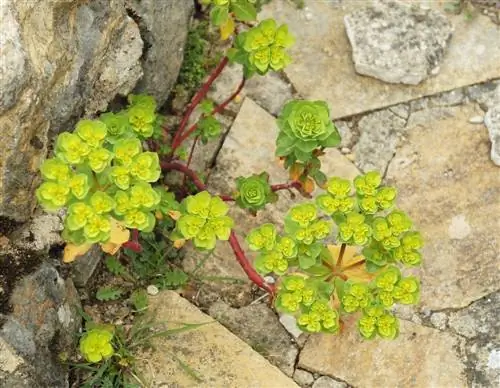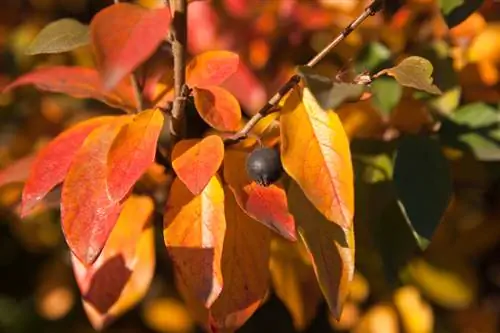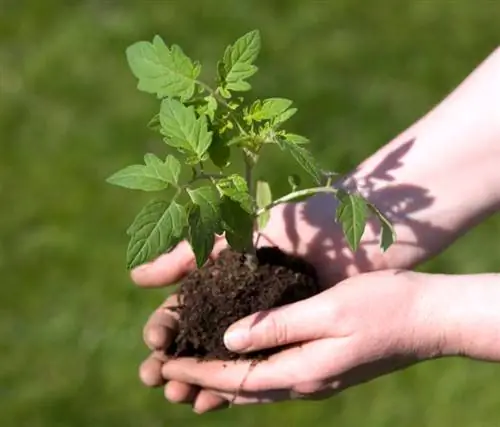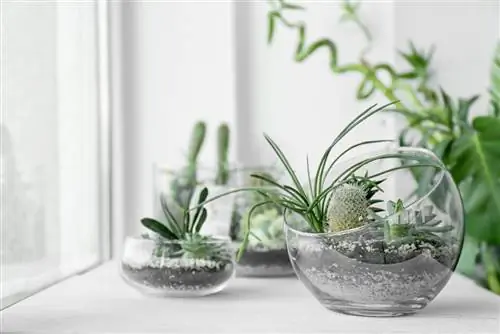- Author admin [email protected].
- Public 2023-12-16 16:46.
- Last modified 2025-01-23 11:21.
The more than 2,000 different subspecies of the plant genus Euphorbia (German: spurge family) worldwide are not only visually very diverse, but also differ in their requirements when choosing a location and care. Since spurge plants have their natural distribution areas across different climatic zones and regions of the earth, only very limited general statements can be made about their sensitivity to frost.
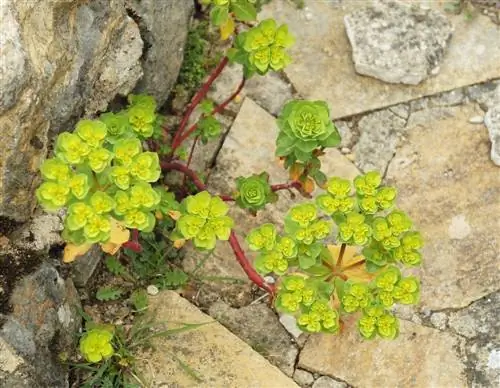
Which Euphorbia species are hardy?
There are some hardy Euphorbia species that can withstand temperatures down to minus 20 degrees Celsius, such as Euphorbia helioscopia, Euphorbia peplus, Euphorbia myrsinites, Euphorbia palustris and Euphorbia marginata. These differ visually from their cactus-like relatives and usually grow less than 1 meter high.
Certain types of milkweed are better cultivated indoors all year round
Various species of Euphorbia come from tropical and subtropical natural landscapes and desert areas, where the climate is significantly warmer all year round than in Central Europe. Accordingly, the following types of spurge, for example, can react sensitively not only to sub-zero temperatures, but also to temperatures below 10 degrees Celsius:
- the cactus spurge
- the triangular spurge
- the pencil bush
Even the so-called magic snow is not hardy outdoors and must be protected over the winter indoors. These Euphorbia species are therefore either cultivated all year round in the room or winter garden, or placed as potted plants on the terrace over the summer and relocated to their winter quarters in good time in the fall.
The hardy varieties are visually simpler
In fact, there are also spurge plants that can withstand temperatures of up to minus 20 degrees Celsius outdoors. However, these differ visually significantly from their cactus-like relatives. These perennial spurge plants can be planted in a gravelly perennial bed in a suitable location:
- Euphorbia helioscopia
- Euphorbia peplus
- Euphorbia myrsinites
- Euphorbia palustris
- Euphorbia marginata
The growth height of these spurge species is usually significantly less than 1 m. In contrast to the succulent houseplants of the genus, the listed spurge species tend to be rather moist and nutrient-rich in the garden bed.
Avoid pruning in autumn
Pruning hardy euphorbias should only be done in autumn if it is a species that moves completely into the ground to overwinter. With the other garden euphorbias, however, the plant material should remain as complete as possible, as it offers a certain degree of frost protection for the root area. Any necessary pruning can then be done more gently in the spring.
Tip
The hardy Euphorbia species are also characterized by their characteristic milky plant sap. Therefore, a certain level of protection against the ingredients of the toxic latex should always be ensured when taking care measures.

